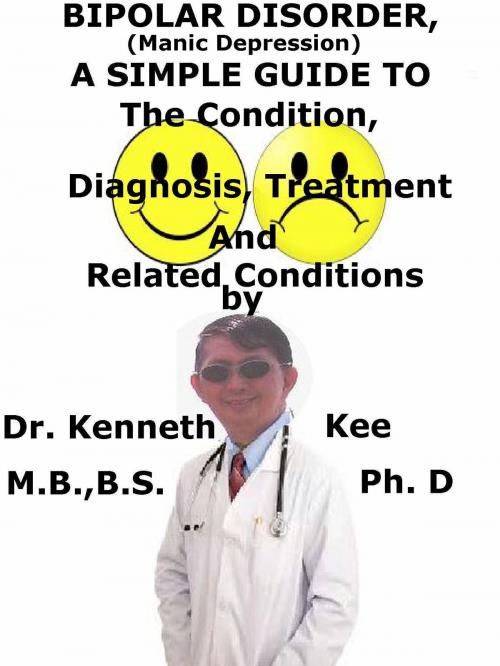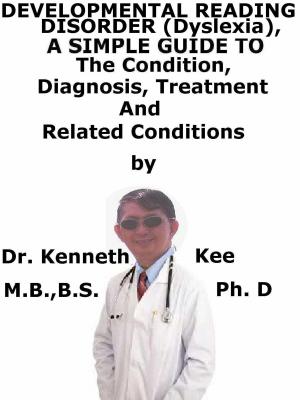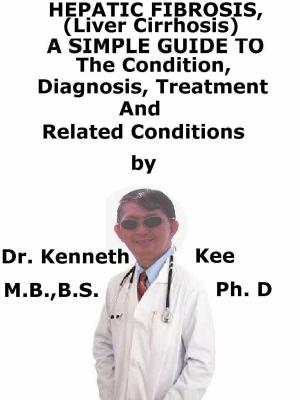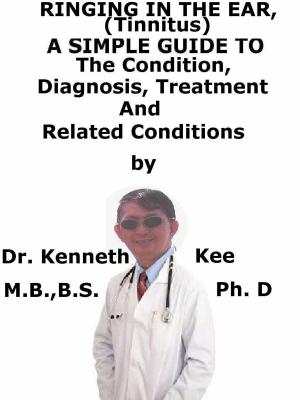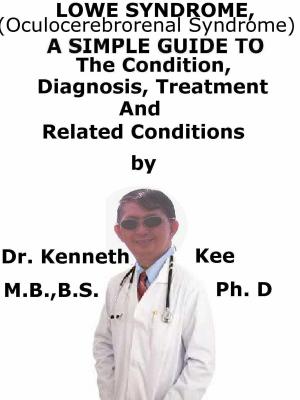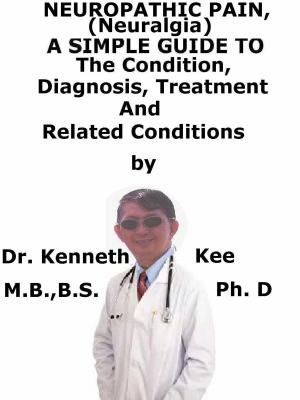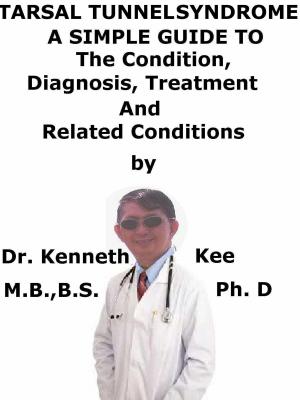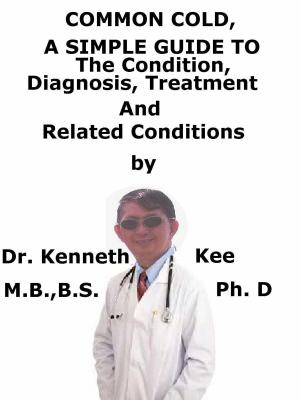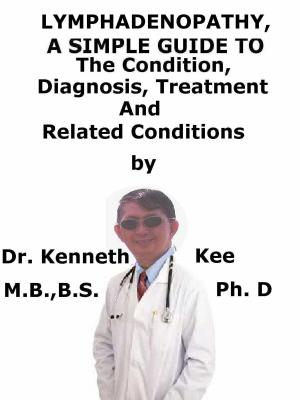Bipolar Disorders, (Manic Depression), A Simple Guide To The Condition, Diagnosis, Treatment And Related Conditions
Nonfiction, Health & Well Being, Psychology, Mental Illness, Medical, Specialties, Psychiatry| Author: | Kenneth Kee | ISBN: | 9781370958849 |
| Publisher: | Kenneth Kee | Publication: | October 4, 2016 |
| Imprint: | Smashwords Edition | Language: | English |
| Author: | Kenneth Kee |
| ISBN: | 9781370958849 |
| Publisher: | Kenneth Kee |
| Publication: | October 4, 2016 |
| Imprint: | Smashwords Edition |
| Language: | English |
Bipolar Disorder (Manic Depression) is a medical disorder in which people swings between periods of a very good or irritable mood (mania) and depression.
Bipolar disorder is a mental illness that causes extreme mood swings.
This disorder is also called manic-depressive illness or manic depression.
Bipolar disorder is a mental disorder in which a person has wide or extreme swings in their mood.
Periods of feeling sad and depressed may interchange with periods of being very happy and active or being angry or irritable.
The precise cause is still not known, but it can happen in families of people with Bipolar Disorder.
Bipolar disorder may be produced by a chemical imbalance in the brain.
Both men and women can have bipolar disorder.
Persons of all ages can have it.
It normally begins between ages 15 - 25.
Occasionally, a person who has bipolar disorder may feel very pleased, full of energy and capable of doing anything.
A. Manic phase -last from days to months:
1. Easily distracted
2. Little need for sleep
3. Full of energy and restlessness
4. Feeling very powerful and self-important
At other times, a patient who has bipolar disorder may feel very miserable and depressed.
B. Depressed stage of both forms of Bipolar Disorder:
1. Daily low mood or sadness
2. Feeling of hopelessness
3. Tiredness or lack of energy
4. Feeling worthless, hopeless, or guilty
Treatment is first with mood stabilizers such as:
1. Carbamazepine
2. Lamotrigine
3. Lithium
4. Sodium Valproate (valproic acid)
Other drugs used to treat are:
1. Antipsychotic drugs and anti-anxiety drugs (benzodiazepines)
2. Antidepressant medications
With medicines, the patient may start to feel better
Psychotherapy (or Talk Therapy) may be helpful
Electroconvulsive therapy (ECT) may be used to treat the manic or depressive phase of Mood Swings if it does not respond to medicine
Suicide, serious suicide attempts, eating disorders, and self-mutilation are examples of self-injurious behavior are frequent in bipolar disease patients.
In fact half of the bipolar diseases patients experience suicides in his or her lifetime.
Understanding this behavior, recognizing the warning signs and managing ongoing risk is an important point to understanding this condition by doctors.
Bipolar disorder is definitely one of the most difficult of mental illnesses for any intimate relationships.
The family must be able to endure episodic and recurrent mood swing.
Episodes of mania or depression can affect the patient’s ability to continue employment and provide his or her family’s income
TABLE OF CONTENT
Introduction
Chapter 1 Bipolar Disorder
Chapter 2 Causes
Chapter 3 Symptoms
Chapter 4 Diagnosis
Chapter 5 Treatment
Chapter 6 Prognosis
Chapter 7 Hypomania
Chapter 8 Clinical Depression
Epilogue
Bipolar Disorder (Manic Depression) is a medical disorder in which people swings between periods of a very good or irritable mood (mania) and depression.
Bipolar disorder is a mental illness that causes extreme mood swings.
This disorder is also called manic-depressive illness or manic depression.
Bipolar disorder is a mental disorder in which a person has wide or extreme swings in their mood.
Periods of feeling sad and depressed may interchange with periods of being very happy and active or being angry or irritable.
The precise cause is still not known, but it can happen in families of people with Bipolar Disorder.
Bipolar disorder may be produced by a chemical imbalance in the brain.
Both men and women can have bipolar disorder.
Persons of all ages can have it.
It normally begins between ages 15 - 25.
Occasionally, a person who has bipolar disorder may feel very pleased, full of energy and capable of doing anything.
A. Manic phase -last from days to months:
1. Easily distracted
2. Little need for sleep
3. Full of energy and restlessness
4. Feeling very powerful and self-important
At other times, a patient who has bipolar disorder may feel very miserable and depressed.
B. Depressed stage of both forms of Bipolar Disorder:
1. Daily low mood or sadness
2. Feeling of hopelessness
3. Tiredness or lack of energy
4. Feeling worthless, hopeless, or guilty
Treatment is first with mood stabilizers such as:
1. Carbamazepine
2. Lamotrigine
3. Lithium
4. Sodium Valproate (valproic acid)
Other drugs used to treat are:
1. Antipsychotic drugs and anti-anxiety drugs (benzodiazepines)
2. Antidepressant medications
With medicines, the patient may start to feel better
Psychotherapy (or Talk Therapy) may be helpful
Electroconvulsive therapy (ECT) may be used to treat the manic or depressive phase of Mood Swings if it does not respond to medicine
Suicide, serious suicide attempts, eating disorders, and self-mutilation are examples of self-injurious behavior are frequent in bipolar disease patients.
In fact half of the bipolar diseases patients experience suicides in his or her lifetime.
Understanding this behavior, recognizing the warning signs and managing ongoing risk is an important point to understanding this condition by doctors.
Bipolar disorder is definitely one of the most difficult of mental illnesses for any intimate relationships.
The family must be able to endure episodic and recurrent mood swing.
Episodes of mania or depression can affect the patient’s ability to continue employment and provide his or her family’s income
TABLE OF CONTENT
Introduction
Chapter 1 Bipolar Disorder
Chapter 2 Causes
Chapter 3 Symptoms
Chapter 4 Diagnosis
Chapter 5 Treatment
Chapter 6 Prognosis
Chapter 7 Hypomania
Chapter 8 Clinical Depression
Epilogue
